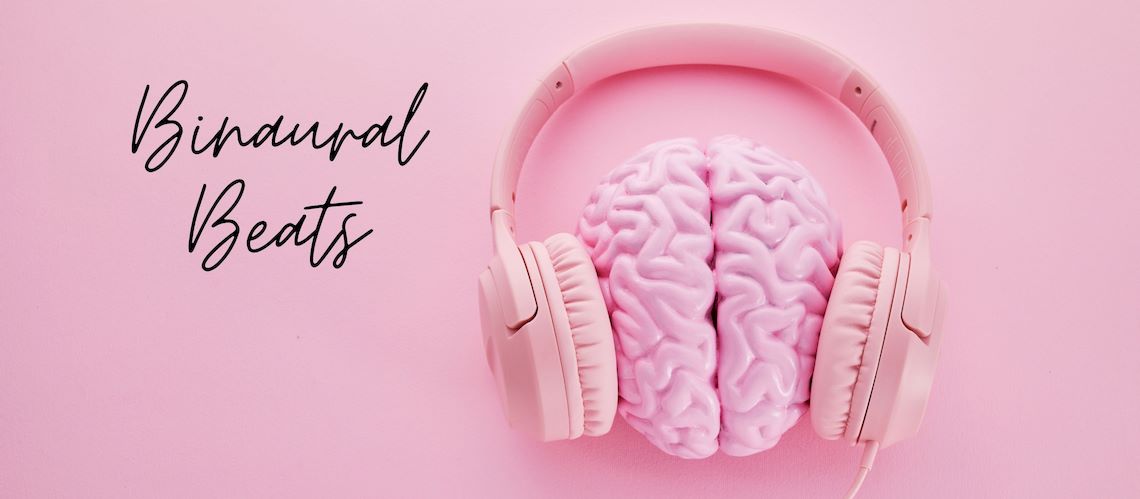Binaural beats are an auditory phenomenon that occurs when two different pure-tone sine waves, each with a frequency lower than 1500 Hz and with less than a 40 Hz difference between them, are presented to a listener dichotically (one tone in each ear). The brain perceives a third tone, which is the mathematical difference between the two frequencies. This perceived tone is known as the binaural beat. The concept of binaural beats has been used as a form of sound wave therapy, with claims that it can improve various aspects of cognitive and emotional health.
Definition
Binaural beats occur when each ear is presented with a tone of slightly different frequency. The brain processes these tones and perceives a third tone, known as the binaural beat, which is the difference in frequency between the two tones. This auditory illusion is believed to influence brainwave activity, potentially synchronizing brain waves to the frequency of the perceived beat. This synchronization is thought to promote different states of mental activity, such as relaxation, focus, or sleep.
History and Origins
The concept of binaural beats was first discovered in 1839 by Heinrich Wilhelm Dove, a German scientist known for his work in meteorology and physics. Dove’s discovery, however, did not gain widespread attention until the late 20th century, when researchers began to explore its potential therapeutic effects on cognitive and emotional health. The resurgence of interest in binaural beats was largely driven by advancements in neuroimaging technologies, which allowed scientists to investigate how these auditory phenomena might influence brain activity.
Principles and Concepts
- Frequency Following Response (FFR): The frequency following response is the brain’s natural tendency to synchronize its neural oscillations, or brainwave frequencies, with the frequency of an external auditory stimulus. This principle is fundamental to the claimed effects of binaural beats, as it suggests that auditory stimuli can influence brainwave patterns and, consequently, mental states.
- Brainwave Entrainment: Brainwave entrainment refers to the process of using rhythmic stimuli, such as sound waves, to naturally synchronize the brain’s electrical activity to a desired frequency. Binaural beats are a specific form of auditory entrainment, with different frequencies purportedly inducing different states of consciousness, such as relaxation (alpha waves) or deep sleep (delta waves).
Benefits
The use of binaural beats is associated with several potential benefits, although these claims are subject to ongoing scientific investigation. Reported benefits include:
- Enhanced Relaxation and Reduced Stress: Binaural beats are commonly used in stress reduction practices, with studies suggesting they can facilitate relaxation and reduce physiological markers of stress.
- Improved Focus and Concentration: Some evidence suggests that binaural beats in the beta frequency range (13–30 Hz) may enhance focus and concentration, particularly in tasks requiring sustained attention.
- Better Sleep Quality: Binaural beats in the delta frequency range (1–4 Hz) are believed to promote deep sleep, potentially improving overall sleep quality.
- Heightened Creativity and Problem-Solving Abilities: Some practitioners claim that binaural beats can enhance creative thinking and problem-solving, particularly when using frequencies associated with relaxed alertness (alpha waves).
- Alleviation of Anxiety and Depression: Preliminary research indicates that binaural beats may help alleviate symptoms of anxiety and depression, possibly by promoting relaxation and reducing stress.
Applications
Binaural beats are used in various therapeutic and self-improvement contexts, including:
- Stress and Anxiety Reduction: Binaural beats are frequently used as part of relaxation and stress management practices. Studies suggest that they can reduce anxiety levels, particularly when used in conjunction with other relaxation techniques such as meditation.
- Cognitive Enhancement and Learning Improvement: There is emerging evidence that binaural beats may enhance cognitive performance, particularly in areas such as memory, attention, and learning. However, more research is needed to establish these effects conclusively.
- Sleep Disorders and Insomnia: Binaural beats in the delta frequency range are often used as a non-pharmacological approach to improving sleep quality and treating insomnia.
- Meditation and Mindfulness Practices: Binaural beats are sometimes incorporated into meditation practices to deepen relaxation and enhance the meditative experience.
- Emotional Regulation and Mood Enhancement: By promoting relaxation and reducing stress, binaural beats may help regulate emotions and improve overall mood.
Scientific Evidence
The efficacy of binaural beats in various applications has been supported by some studies, though the evidence is still developing:
- Anxiety Reduction: A study by Le Scouarnec et al. (2001) in the Journal of Alternative and Complementary Medicine found that binaural beats could significantly reduce anxiety. Participants who listened to binaural beat tapes reported a decrease in anxiety levels compared to those who listened to placebo tapes without binaural beats (Le Scouarnec et al., 2001).
- Cognitive Performance: Research published in Frontiers in Human Neuroscience by Beauchene et al. (2017) demonstrated that binaural beats could enhance working memory performance. The study found that participants exposed to binaural beats showed improvements in tasks requiring working memory, suggesting potential cognitive benefits (Beauchene et al., 2017).
How to Get Started
To effectively incorporate binaural beats into your wellness routine, consider the following steps:
- Choose a Purpose: Identify the specific goal you want to achieve with binaural beats, such as relaxation, focus, or improved sleep.
- Select Frequencies: Choose binaural beat tracks that correspond to the desired brainwave state. For example, delta frequencies (1–4 Hz) are associated with deep sleep, while alpha frequencies (8–13 Hz) are linked to relaxation.
- Use Headphones: Binaural beats require the use of headphones to ensure that each ear receives the correct frequency. Without headphones, the effect cannot be properly achieved.
- Regular Practice: Consistency is key to experiencing the benefits of binaural beats. Incorporate them into your daily routine, whether during meditation, work, or before sleep.
Case Studies or Testimonials
Although anecdotal evidence should be approached with caution, many individuals report significant improvements in their mental and emotional health through regular use of binaural beats. For example, students have reported better focus and retention, while individuals with anxiety have experienced reduced symptoms and enhanced relaxation. However, these personal accounts should be complemented with rigorous scientific research to substantiate the claims.
Conclusion
Binaural beats represent a promising tool for enhancing cognitive and emotional health. While the scientific community continues to explore their full potential, existing research suggests that they may offer benefits in areas such as stress reduction, cognitive enhancement, and sleep improvement. By integrating binaural beats into your wellness routine, you may be able to experience these benefits and improve your overall well-being.
References
Beauchene, C., Abaid, N., Moran, R., Diana, R. A., & Tegeler, C. L. (2017). The effect of binaural beats on working memory performance. Frontiers in Human Neuroscience, 11, 557. doi:10.3389/fnhum.2017.00557
Le Scouarnec, R. P., Poirier, R. M., Owens, J. E., Gauthier, J., Taylor, A. G., & Foresman, P. A. (2001). Use of binaural beat tapes for treatment of anxiety: A pilot study of tape preference and outcomes. Alternative Therapies in Health and Medicine, 7(1), 58-63.




